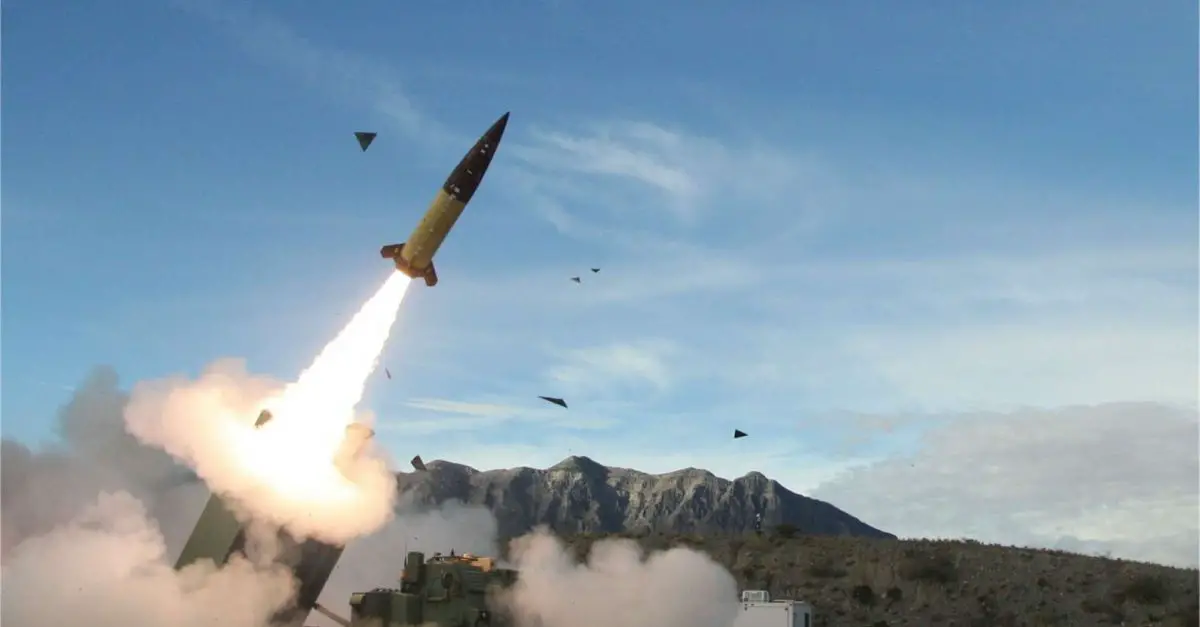Breaking news
Possible Buk-M3 Air Defense System Involvement as Russia Intercepts 15 US ATACMS Missiles Over Crimea.
On May 4, 2024, the Russian Ministry of Defense reported a significant interception of American-made ATACMS (Army Tactical Missile System) missiles. According to the Ministry's announcement today, Russian air defense units successfully destroyed 15 ATACMS missiles, with four being intercepted over the Crimea Peninsula on May 4, 2024.
Follow Army Recognition on Google News at this link

The US ATACMS missile was recently delivered to Ukraine to fight Russian troops. (Picture source U.S. DoD)
These interceptions were made possible by the latest version of Russia's Buk air defense missile system, the Buk-M3. The Buk-M3, renowned for its capability to engage multiple aerial targets under severe electronic warfare conditions, proved its effectiveness against the ATACMS, a longer-range missile system recently supplied by the United States to Ukraine.
The ATACMS delivery to Ukraine was disclosed at the end of April 2024, with over 100 units reportedly provided to enhance Ukrainian strike capabilities. This disclosure came from The New York Times, which cited unidentified U.S. officials noting the secretive delivery of these advanced tactical missiles.
The ATACMS were reportedly first used by Ukraine on April 17, 2024, to target the Dzhankoi air base in northeastern Crimea. This strike resulted in substantial damage to Russian military assets, including helicopters, an S-400 strategic surface-to-air missile system, and an aerospace surveillance complex that serves as a command-and-control center.
The U.S. Army Tactical Missile System (ATACMS) is a key component of America's tactical missile arsenal, designed for precision strikes against high-value targets at long ranges. Developed in the early 1980s and first deployed during the Gulf War in 1991, ATACMS is a surface-to-surface missile system that can be launched from multiple platforms, including the widely used M270 Multiple Launch Rocket System (MLRS) and the newer M142 High Mobility Artillery Rocket System (HIMARS). Capable of striking targets up to 300 kilometers away, depending on the variant, ATACMS fills a critical role in ground-based tactical warfare, allowing for deep strikes behind enemy lines with a high degree of accuracy.
The ATACMS family includes several variants, each designed to meet specific mission requirements. The missiles are equipped with different types of warheads, ranging from unitary high-explosive to cluster munitions, making them adaptable for a variety of tactical scenarios. Recent upgrades have focused on improving the missile's accuracy and extending its range, as well as reducing collateral damage by incorporating more precise guidance systems. These enhancements have solidified ATACMS's position as a strategic asset in the U.S. military's arsenal, providing a significant standoff capability and the ability to engage and defeat time-sensitive targets swiftly and effectively in various conflict scenarios.
The possible use of the Buk-M3 against the ATACMS highlights a significant escalation in the technological warfare aspect of the Ukraine conflict, showcasing advanced military capabilities on both sides. As the situation develops, the strategic implications of these engagements could significantly influence the ongoing military dynamics in the region.
The Buk-M3, also known as the Viking, is the latest generation of Russia's renowned Buk air defense missile system, designed to address a wide spectrum of aerial threats with improved efficiency and precision. Developed to replace older models of the Buk family, the Buk-M3 significantly enhances the capabilities of ground-based air defense by being able to engage aircraft, helicopters, cruise missiles, and drones, as well as tactical ballistic missiles like the ATACMS. With an operational range of up to 70 kilometers and an altitude reach of up to 35 kilometers, the Buk-M3 stands out for its ability to target multiple airborne objects simultaneously under intense jamming conditions, thanks to its sophisticated radar systems and modernized fire control technology.
The system's mobility and versatility are among its key strengths, featuring a rapid deployment and re-deployment capability that enables it to relocate and become operational within minutes. This makes the Buk-M3 particularly effective in modern, fast-paced combat environments where air threats can emerge suddenly and from multiple directions. Additionally, each Buk-M3 unit can track up to 36 targets and guide missiles at 6 of them concurrently, ensuring a high-density fire capability during combat scenarios. This multi-target engagement capacity, combined with advanced electronic countermeasure resistance, provides a robust defense against a variety of aerial attacks, thereby enhancing the overall air defense structure of the forces it protects.


























